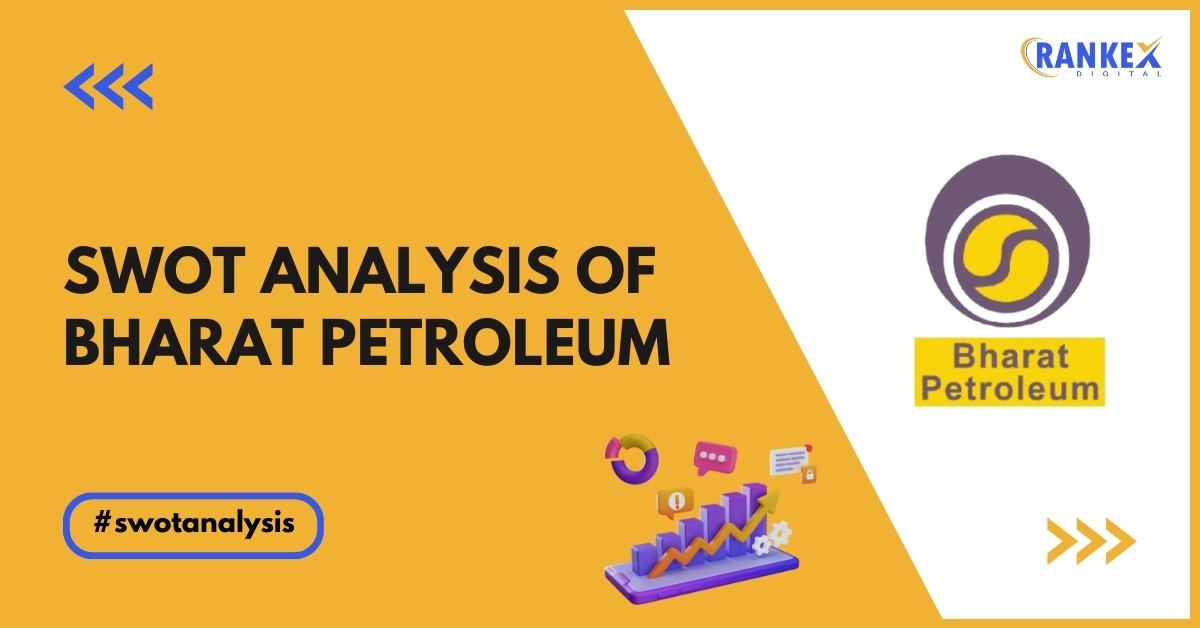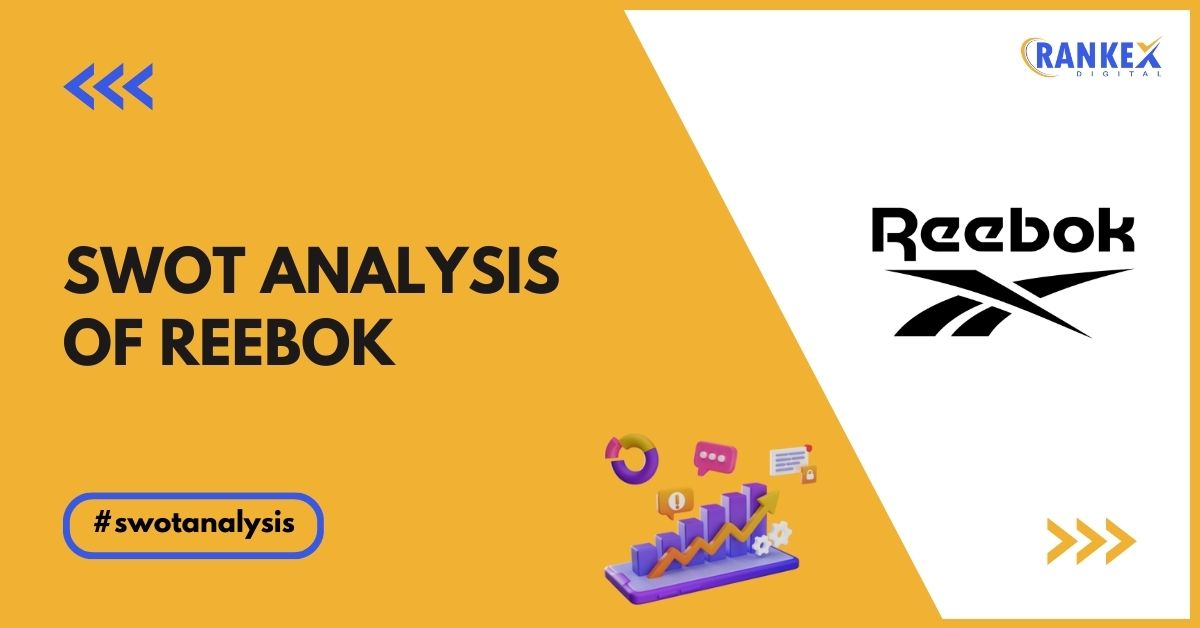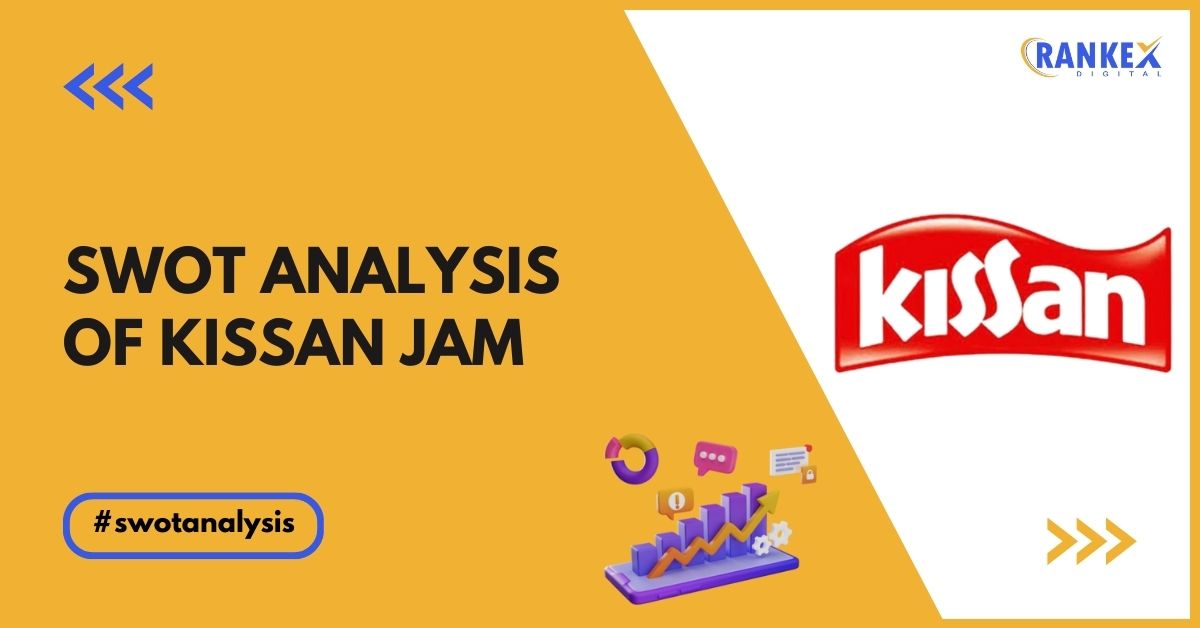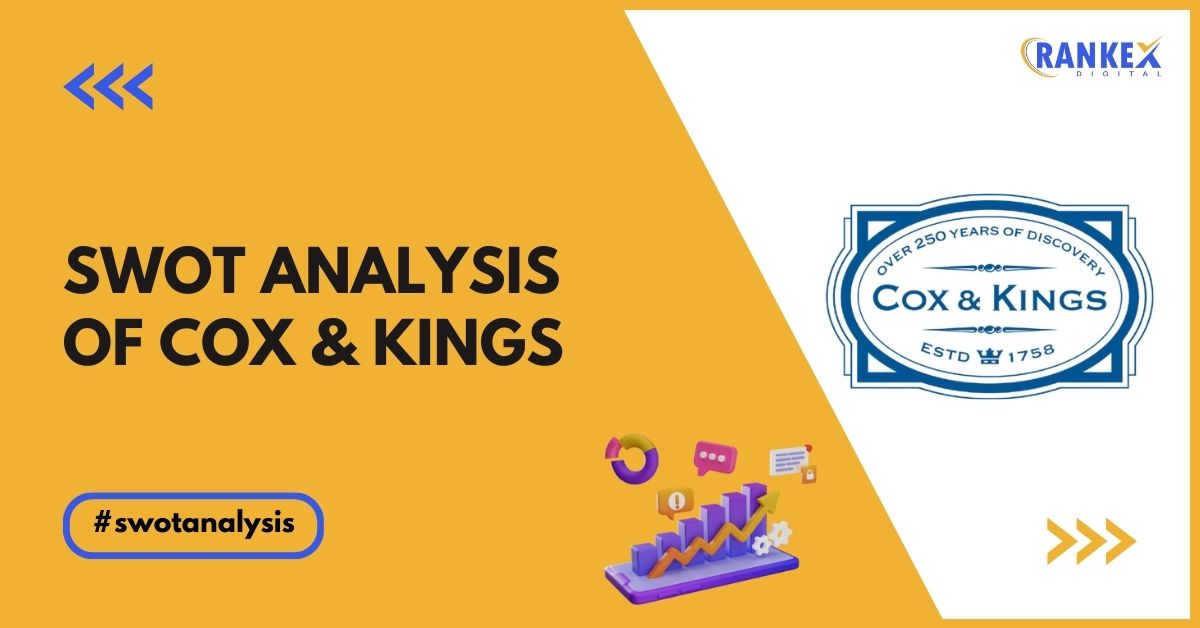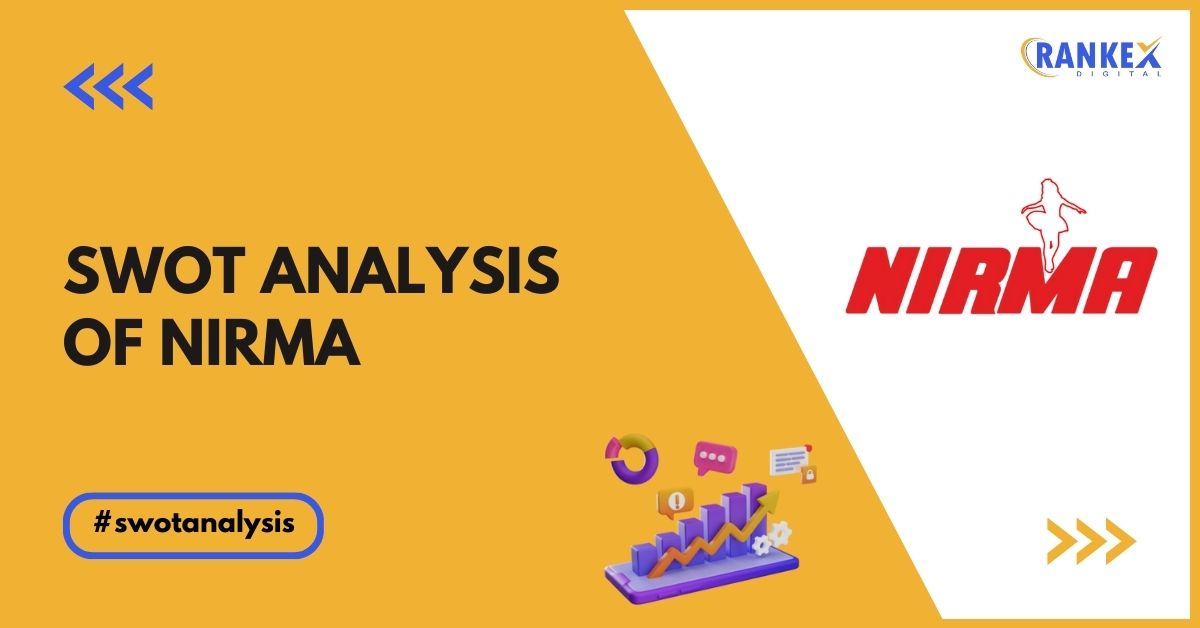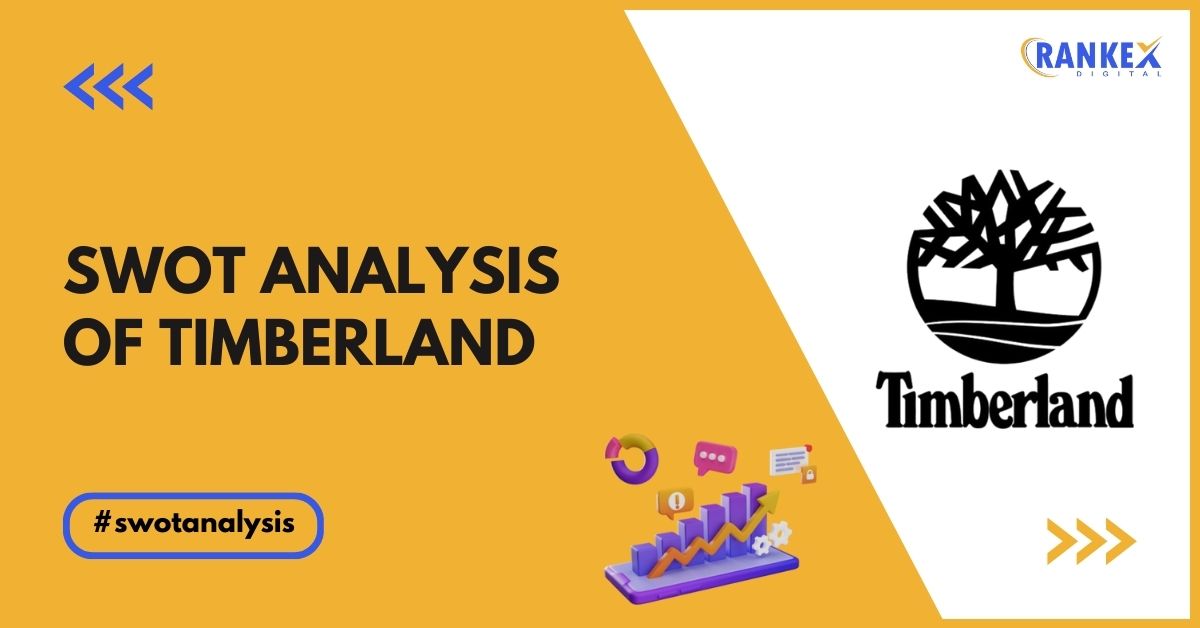Bharat Petroleum Corporation Limited (BPCL) is one of the leading oil and gas companies in India. As a government-owned corporation, BPCL plays a crucial role in the energy sector, providing petroleum products and services to millions of customers across the country.
Understanding the strengths, weaknesses, opportunities, and threats or SWOT analysis of Bharat Petroleum is key to analyzing its market position and planning for future growth. This article offers a detailed SWOT analysis of BPCL, shedding light on its competitive landscape and future prospects.
Table of Contents
Overview of Bharat Petroleum
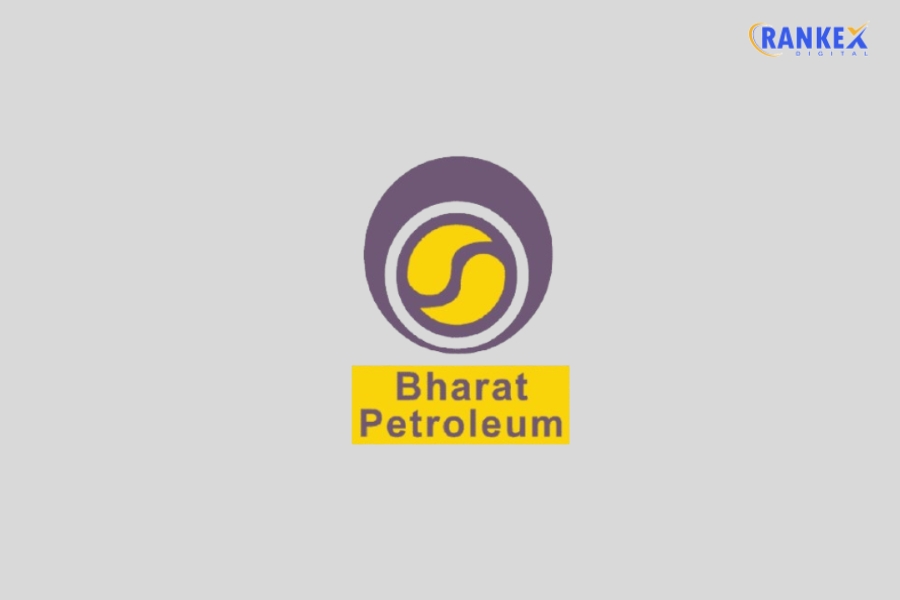
Bharat Petroleum Corporation Limited was established in 1952 and is headquartered in Mumbai, Maharashtra. BPCL is involved in the refining of crude oil, the marketing of petroleum products, and the exploration and production of oil and gas resources. As one of India’s major oil companies, BPCL operates a vast network of refineries, fuel stations, and pipelines across the country.
Quick Stats About BPCL:
| Attribute | Details |
|---|---|
| Founder | Government of India |
| Year Founded | 1952 |
| Origin | Mumbai, Maharashtra, India |
| No. of Employees | 10,000+ |
| CEO | Arun Kumar Singh |
| Company Type | Public (Government-owned) |
| Market Cap | $20 Billion |
| Annual Revenue | $80 Billion |
| Net Profit | $1 Billion |
Current News of BPCL
- Privatization Plans: BPCL has been part of the Indian government’s privatization initiatives, with the government planning to sell its stake in the company.
- Sustainability Initiatives: BPCL has been focusing on reducing its carbon footprint by adopting green energy initiatives, such as biofuels and solar energy.
- Digital Transformation: The company is enhancing its digital capabilities, integrating technologies like AI and data analytics to improve operational efficiency.
- Expansion Plans: BPCL continues to explore opportunities for expanding its global footprint and increasing its market share in the global energy market.
SWOT Analysis of Bharat Petroleum
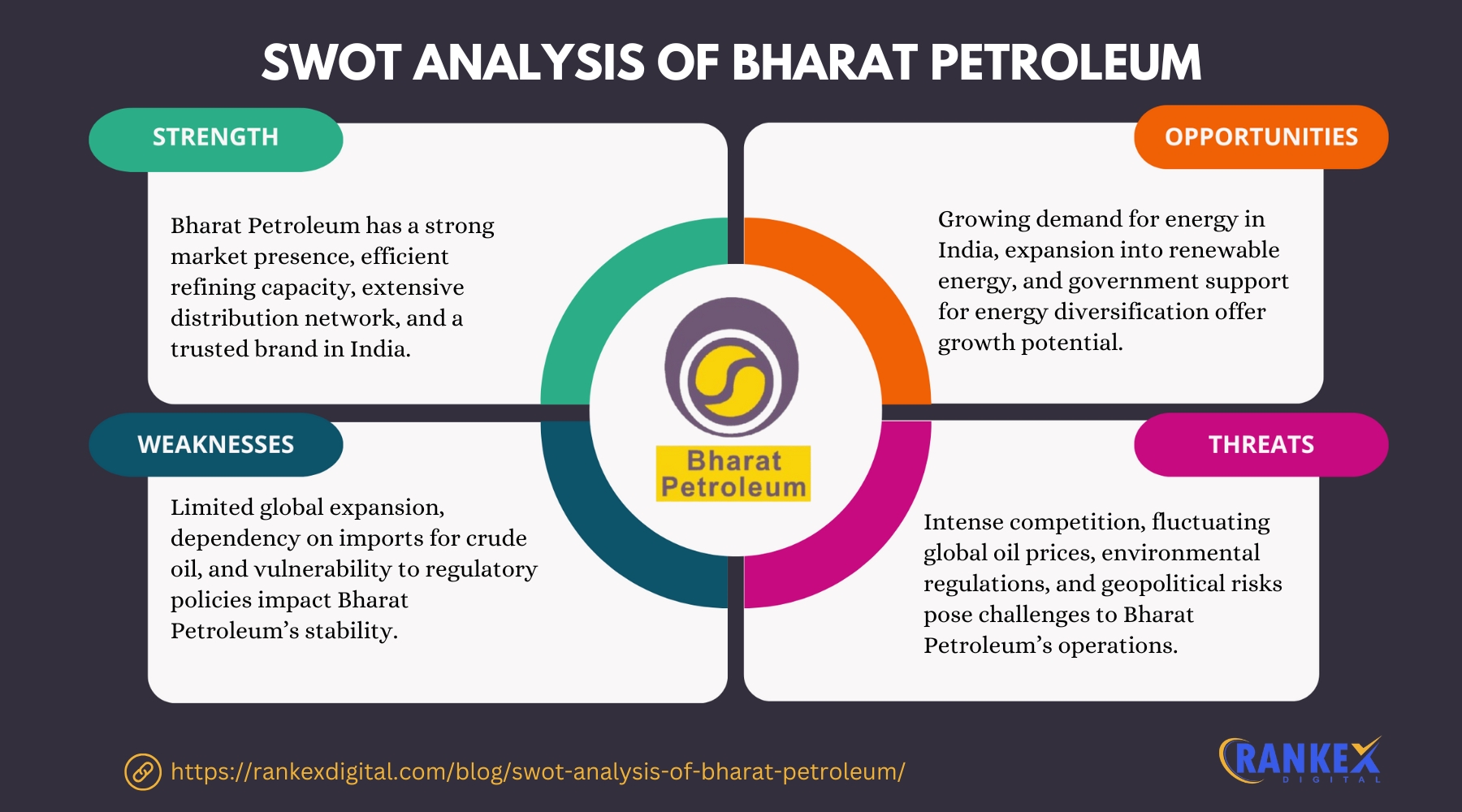
Strengths of BPCL
- Strong Market Presence: BPCL is a dominant player in the Indian energy sector, with over 15,000 fuel stations across the country. The company also owns multiple refineries that process crude oil into various petroleum products, ensuring a steady supply of fuel to its large customer base. This extensive network strengthens its market share.
- Diverse Product Portfolio: BPCL not only offers fuels such as petrol, diesel, and aviation turbine fuel, but also produces lubricants and petrochemicals. This diverse range helps the company cater to a variety of industries, from transportation to manufacturing, further solidifying its position in the market.
- Government Backing: As a state-owned company, BPCL enjoys a strong backing from the Indian government. This support ensures financial stability, access to critical resources, and policy advantages, which helps BPCL weather financial or operational crises that may affect privately-owned competitors.
- Strategic Infrastructure: BPCL’s vast infrastructure, including refineries, pipelines, and storage tanks, allows it to maintain a reliable supply chain and distribution network. This infrastructure enables BPCL to meet both domestic and international energy demands effectively.
- Brand Recognition: BPCL is a well-known and trusted brand in India. It has built a reputation for offering high-quality products and excellent customer service, which strengthens its loyalty base and helps in attracting new customers.
Weaknesses of BPCL
- Dependence on Crude Oil Imports: India’s domestic crude oil production is limited, meaning BPCL must rely heavily on imports. This dependency exposes the company to fluctuations in global oil prices and supply disruptions, impacting profitability and operational costs.
- High Operating Costs: Refining petroleum products is energy and capital-intensive. BPCL’s high operating costs, driven by factors such as energy consumption, refining processes, and maintenance of infrastructure, can lower its profit margins and reduce competitiveness.
- Environmental Concerns: The oil and gas sector is increasingly under pressure to adopt sustainable practices due to its environmental impact. BPCL faces mounting scrutiny to reduce carbon emissions, invest in renewable energy sources, and adopt eco-friendly technologies, which could require significant investments and affect profitability.
- Bureaucratic Challenges: As a government-owned entity, BPCL often deals with bureaucratic inefficiencies. Decision-making can be slow, and the company’s ability to adapt to market changes or implement innovative strategies may be hindered by governmental processes and regulations.
Opportunities for BPCL
- Growing Demand for Energy: India’s rapidly growing economy and increasing population are driving higher energy demand, offering BPCL a significant opportunity to expand its market share, both in the domestic and international markets.
- Renewable Energy Investments: BPCL is investing in renewable energy projects, such as biofuels and solar energy, to diversify its energy portfolio. As the world shifts toward clean energy, BPCL’s early investments in renewable energy could provide it with a competitive edge.
- Digitalization: With advancements in digital technologies, BPCL can improve its operations through automation, data analytics, and AI, leading to better decision-making, operational efficiency, and enhanced customer service. Digital tools can also help BPCL in optimizing its supply chain and reducing costs.
- Expansion in Emerging Markets: BPCL can explore new markets in regions where energy demand is growing rapidly, such as Southeast Asia, Africa, and Latin America. These emerging markets present opportunities for BPCL to expand its customer base and drive revenue growth.
- Strategic Partnerships: BPCL could form strategic alliances with international energy companies, as well as governments, to gain access to new technologies and expand its global footprint. Collaborations could help BPCL in innovation and navigating regulatory challenges in new markets.
Threats to BPCL
- Intense Competition: The Indian oil and gas sector is highly competitive, with major players like Indian Oil Corporation (IOCL), Hindustan Petroleum (HPCL), and several international companies. This competition puts pressure on BPCL to maintain its market share, improve efficiencies, and offer competitive pricing.
- Fluctuating Oil Prices: The volatility of global oil prices is a major threat to BPCL’s profitability. Sharp rises in crude oil prices can increase BPCL’s input costs, while sharp drops can reduce the overall revenue from petroleum products.
- Regulatory Challenges: The oil and gas sector is heavily regulated, and BPCL must comply with a complex set of rules related to environmental protection, safety standards, and fuel pricing. Stringent regulations could increase operational costs, limit expansion opportunities, and delay new projects.
- Geopolitical Risks: BPCL’s global operations are subject to geopolitical risks, such as conflicts in oil-producing regions, political instability, or disruptions in supply chains. Such risks could significantly affect BPCL’s ability to source oil and operate smoothly in international markets.
- Shifts in Consumer Preferences: Increasing environmental awareness and the global push for electric vehicles (EVs) represent significant challenges to traditional oil and gas companies. As demand for conventional petroleum products declines, BPCL needs to transition toward cleaner energy alternatives to stay relevant.
Top Competitors of BPCL:
- Indian Oil Corporation (IOCL)
- Hindustan Petroleum Corporation Limited (HPCL)
- Reliance Industries
- TotalEnergies
- Royal Dutch Shell
Conclusion
The SWOT analysis of Bharat Petroleum reveals its strong market presence, diverse product offerings, and government support as key strengths. However, challenges such as high operating costs, dependence on crude oil imports, and environmental concerns pose significant risks.
The company has several opportunities to explore, including renewable energy investments, digitalization, and global market expansion. However, it also faces threats like intense competition, fluctuating oil prices, and geopolitical risks.
By leveraging its strengths and opportunities while addressing its weaknesses and mitigating threats, BPCL can continue to grow and solidify its position as a leading player in the global energy sector.
Frequently Asked Questions
What is Bharat Petroleum’s core business?
Bharat Petroleum is involved in the refining of crude oil, the marketing of petroleum products, and the exploration and production of oil and gas resources.
How many fuel stations does BPCL operate?
BPCL operates over 15,000 fuel stations across India.
What are BPCL’s sustainability efforts?
BPCL is focusing on reducing its carbon footprint by investing in renewable energy initiatives like biofuels and solar energy.
What are the main competitors of Bharat Petroleum?
BPCL competes with other oil giants like Indian Oil Corporation (IOCL), Hindustan Petroleum Corporation Limited (HPCL), and Reliance Industries.
Is BPCL involved in international markets?
Yes, BPCL is exploring international markets for expansion, especially in emerging economies where energy demand is growing.

